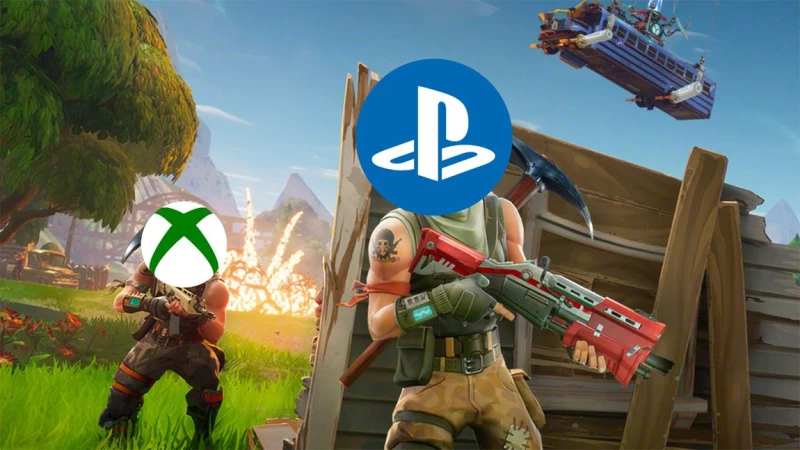Embarking on a journey across multiple gaming realms, cross-platform game development has emerged as a beacon for developers seeking to transcend the boundaries of individual platforms. In this dynamic landscape, developers wield the power to create games that seamlessly traverse diverse devices and ecosystems, offering players a unified experience regardless of their preferred platform. This exploration of cross-platform game development delves into the intricacies of its definition, the mechanics behind crafting games that traverse platforms, and the challenges and triumphs associated with this ambitious venture. So, fasten your seatbelts as we navigate the uncharted realms of cross-platform game development, uncovering the secrets to creating games that transcend traditional gaming boundaries.
What is Cross Platform Game Development?
Cross-platform game development is a revolutionary approach that enables games to run seamlessly across various devices and operating systems. At its core, it is about creating games that can be enjoyed by a broad spectrum of players, irrespective of whether they are on a PC, console, or mobile device. The primary objective is to bridge the gap between different platforms and provide a unified gaming experience. Achieving cross-platform compatibility involves strategic decisions during the game development process.
How to Make a Game Cross-Platform
1. Choose the Right Development Framework: Selecting a development framework that supports cross-platform compatibility is crucial. Options like Unity, Unreal Engine, and Godot offer tools and features to streamline the process. These frameworks empower developers to write code once and deploy it across various platforms.
2. Standardize Input Methods: Different platforms may have distinct input methods, such as touch controls for mobile devices and keyboard/mouse for PCs. Standardizing input methods ensures a consistent user experience across platforms. Consider implementing adaptive controls that seamlessly adjust based on the user’s device.
3. Optimize Graphics and Performance: Each platform has its hardware specifications, so optimizing graphics and performance is key. Utilize platform-specific features when necessary and conduct thorough testing on different devices to ensure smooth gameplay across the board.
4. Cross-Platform Testing: Testing is a critical phase in cross-platform development. Regularly test your game on various devices and operating systems to identify and resolve compatibility issues. Emulators can be valuable during the testing phase, but real device testing is essential for accurate results.
5. Implement Cross-Platform APIs: Leverage cross-platform APIs (Application Programming Interfaces) to facilitate communication between the game and the underlying operating system. These APIs provide a bridge for functions like multiplayer interactions, leaderboards, and in-app purchases across different platforms.
How Do Cross-Platform Games Work?
Cross-platform games work by employing technologies and strategies that enable them to run seamlessly on multiple devices and operating systems. Here’s an overview of the underlying principles:
1. Unified Codebase: Developers create a single codebase for the game using a cross-platform development framework. This codebase contains the core logic, game mechanics, and features, ensuring consistency across all platforms.
2. Platform-Specific Adaptations: While the core codebase remains the same, developers implement platform-specific adaptations to accommodate unique hardware capabilities, input methods, and performance requirements. This ensures that the game optimally utilizes each platform’s strengths.
3. Cross-Platform Middleware: Middleware, such as Unity’s game engine or other cross-platform tools, acts as a bridge between the game and the underlying hardware and operating systems. It abstracts away platform-specific complexities, allowing developers to focus on creating a cohesive gaming experience.
4. Seamless Networking: For multiplayer games, cross-platform compatibility involves implementing seamless networking protocols. This enables players on different platforms to interact with each other in real-time, fostering a unified gaming community.
What Games Are Cross Platforms?
In the dynamic realm of modern gaming, cross-platform compatibility has become a defining feature for numerous titles, breaking down barriers between different gaming ecosystems. Whether you’re a console enthusiast, a PC gamer, or someone who enjoys gaming on the go, the landscape of cross-platform games is continually expanding. Here’s a closer look at the diverse array of games that embrace cross-platform functionality:
1. Fortnite: The Pioneer of Cross-Platform Play
Fortnite, developed by Epic Games, stands as a trailblazer in the world of cross-platform gaming. Available on multiple platforms, including PC, consoles (PlayStation, Xbox, Nintendo Switch), and mobile devices (iOS, Android), Fortnite allows players to seamlessly team up or compete against each other, regardless of the device they’re using. Its groundbreaking approach has set a precedent for other games to follow, fostering a truly unified gaming experience.

2. Rocket League: Soccer with a Twist Across Platforms
Rocket League, a high-octane fusion of soccer and vehicular mayhem, has successfully implemented cross-platform play. Players on PC, PlayStation, Xbox, and Nintendo Switch can all join the same adrenaline-fueled matches. The game’s emphasis on teamwork and creativity is amplified as friends across different platforms collaborate or compete in this physics-defying sports spectacle.
3. Minecraft: Building Bridges Between Platforms
Minecraft, the iconic sandbox game, transcends platform boundaries with its cross-platform support. Whether you’re playing on a PC, gaming console, or mobile device, Minecraft encourages players to explore, create, and survive together in the same virtual world. This universal accessibility has contributed to Minecraft’s enduring popularity, fostering a global community of builders and adventurers.
4. Call of Duty: Warzone – A Cross-Platform Warfare Experience
Call of Duty: Warzone, the free-to-play battle royale installment in the renowned franchise, exemplifies the commitment to cross-platform play. Gamers on PC, PlayStation, and Xbox can engage in intense firefights on the same battlefield, showcasing the potential for a harmonious coexistence across diverse gaming platforms.
5. Apex Legends: Squad-Based Thrills Without Platform Barriers
Apex Legends, a fast-paced battle royale game set in the Titanfall universe, embraces cross-platform play to bring players together regardless of their gaming device. Whether you prefer playing on a PC, PlayStation, or Xbox, the game’s intense squad-based action remains consistent, allowing for a shared gaming experience across the entire Apex Games arena.
6. Among Us: Social Deduction Across Platforms
Among Us, the breakout social deduction game facilitates inter-platform camaraderie as players attempt to identify impostors among their crewmates. Available on PC, mobile devices, and Nintendo Switch, Among Us has become a global phenomenon, proving that cross-platform play can enhance the social dynamics of multiplayer gaming.
Which Challenges Can You Face During Cross-Development?
Embarking on cross-platform game development is an exciting journey, but it’s not without its challenges. Understanding and overcoming these hurdles is crucial for a successful project. Here’s a closer look at the challenges developers may face during cross-platform game development:
1. Device Fragmentation: One of the primary challenges is the diversity of devices and operating systems. Each platform, whether it’s PC, console, or mobile, comes with its unique specifications, screen sizes, and hardware capabilities. Ensuring a consistent and optimized gaming experience across this diverse landscape requires meticulous testing and adaptation.
2. Input Variability: Different platforms employ distinct input methods, such as keyboards, controllers, touchscreens, and motion sensors. Harmonizing these input methods to provide a seamless gaming experience requires careful consideration and often necessitates creating adaptive control systems that cater to each platform’s specific interface.
3. Performance Optimization: Optimizing game performance for various platforms is a critical challenge. Developers must strike a balance between delivering high-quality graphics and maintaining smooth gameplay across devices with varying processing power and hardware capabilities. This optimization process often involves platform-specific adjustments and fine-tuning.
4. Cross-Platform Testing: Thorough testing is essential for identifying and resolving compatibility issues. The use of emulators during development may not replicate real-world scenarios accurately. Testing on actual devices helps ensure that the game functions as intended across different platforms, minimizing the risk of unforeseen issues during release.
Benefits of Cross-Platform Game Development
While cross-platform game development poses its challenges, the benefits are equally compelling, making it a rewarding choice for many developers:
1. Wider Audience Reach: Cross-platform games break down the barriers between gaming ecosystems, allowing developers to tap into a broader audience. Players on PC, console, and mobile devices can all engage with the same game, fostering a more inclusive and expansive gaming community.
2. Cost-Efficiency: Developing a game for multiple platforms from a single codebase can significantly reduce development costs. Instead of creating separate versions for each platform, developers can streamline their workflow, saving both time and resources.
3. Unified User Experience: Cross-platform games provide a consistent user experience across devices. Players can switch between platforms seamlessly without sacrificing game progress or features, enhancing the overall accessibility and convenience for the gaming community.
Best Cross-Platform Game Engines
Choosing the right game engine is pivotal for successful cross-platform development. Here are some of the best cross-platform game engines:
1. Unity: Unity is a versatile and widely used game engine that supports cross-platform development for PCs, consoles, mobile devices, and more. Its user-friendly interface, extensive documentation, and large community make it an excellent choice for developers of all levels.

2. Unreal Engine: Unreal Engine, known for its stunning graphics and powerful capabilities, is another top choice for cross-platform game development. It provides a range of tools and features, making it suitable for both small indie projects and large-scale productions.
3. Godot Engine: Godot is an open-source game engine that supports cross-platform development. With a focus on simplicity and flexibility, Godot is an attractive option for indie developers and those looking for a customizable and lightweight solution.
Read Also: Best Game Engines | The Best Option to Choose in 2023
Final Thought
In the ever-evolving landscape of game development, cross-platform game development presents both challenges and opportunities. While overcoming the hurdles of device fragmentation, input variability, and performance optimization may be demanding, the benefits of a wider audience reach, cost-efficiency and a unified user experience make it a compelling endeavor.
Choosing the right cross-platform game engine further streamlines the game development stages , empowering developers to bring their vision to a diverse and global gaming audience. As technology continues to advance, navigating these challenges and leveraging the benefits will be key to creating immersive and accessible gaming experiences for players worldwide.



